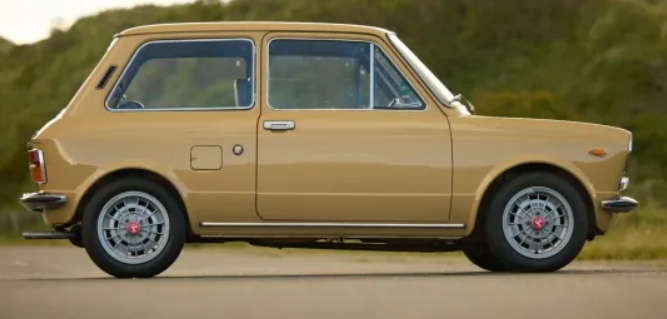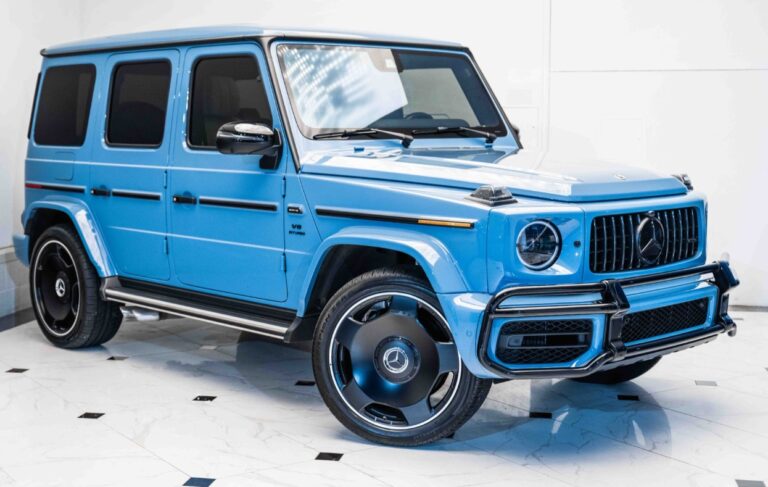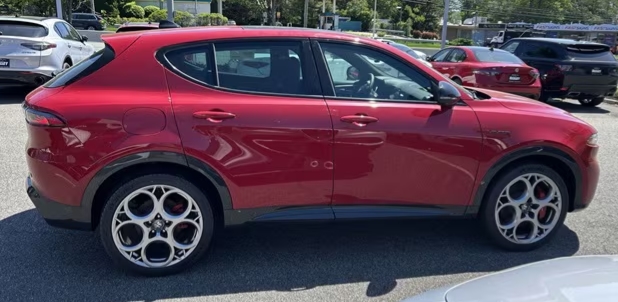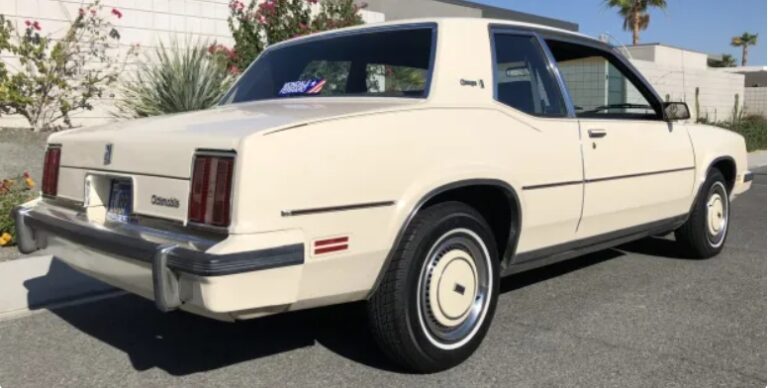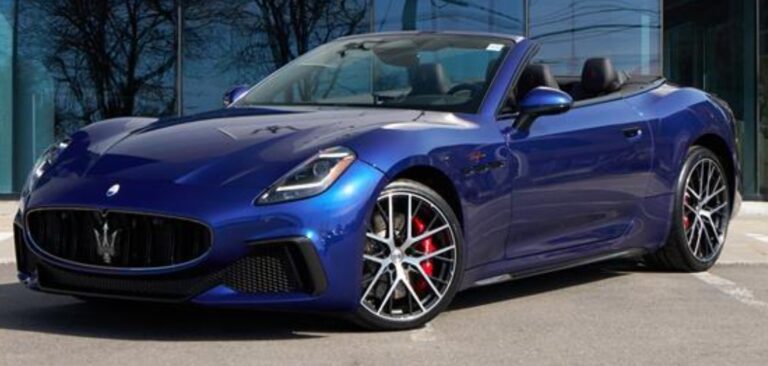The Lancia A112: A Pocket Rocket’s Enduring Legacy
In the annals of automotive history, few cars evoke such a passionate and enduring affection as the Lancia A112. Often abbreviated as “Abarth” by enthusiasts, a testament to the sportier versions that captivated a generation, this diminutive Italian hatchback was a masterclass in compact car design and engineering. From its inception in 1972 to its swansong in 1986, the A112 underwent a series of thoughtful evolutions, refining its character and solidifying its reputation as a spirited, stylish, and surprisingly practical city car that could also punch well above its weight.
The Genesis: Birth of a Legend (1972-1973)
The Lancia A112 arrived on the scene in October 1972, designed as a successor to the venerable Fiat 600 and a competitor to the burgeoning small car market, particularly the Mini. Lancia, then under Fiat ownership, aimed to inject its signature blend of refinement, handling prowess, and distinctive styling into a more accessible package. The initial “Prima Serie” (First Series) was a breath of fresh air.
Underneath its neatly sculpted, Giugiaro-penned bodywork, the A112 was a marvel of compact engineering. It utilized a transverse-mounted, water-cooled four-cylinder engine, a configuration that was becoming increasingly popular for its space-saving benefits. The engine displaced 965cc, producing a modest but peppy 46 horsepower. This powerplant was mated to a four-speed manual gearbox, driving the front wheels.
The A112’s platform was a revelation for its size. Lancia engineers prioritized excellent handling, a hallmark of the brand. Independent suspension all around, with MacPherson struts at the front and a transverse leaf spring acting on trailing arms at the rear, provided a remarkably supple ride for a car of its class, coupled with nimble, predictable road manners. Disc brakes at the front and drums at the rear offered adequate stopping power for the era.
Inside, the A112 exuded a certain Lancia charm. While basic by today’s standards, the dashboard was well-laid-out, and the materials, though utilitarian, felt a cut above some of its rivals. The driving position was comfortable, and the overall sense of quality was palpable.
The initial offering was relatively straightforward, with a single trim level available. However, the seeds of its future sporty variants were already sown in its inherent chassis dynamics and agile nature.
.

.
The Abarth Influence Begins to Blossom: The A112 Abarth (1973-1975)
Recognizing the A112’s inherent sporting potential, Lancia wasted no time in introducing its performance arm, Abarth. In 1973, the A112 Abarth (often referred to as the “A112 Abarth 58 HP” or “A112 Abarth 1st Series”) burst onto the scene. This was not just a cosmetic upgrade; it was a serious performance variant designed to thrill.
The most significant change was under the bonnet. The 965cc engine was enlarged to 982cc and tuned for more spirited performance, boasting a healthy 58 horsepower. This was achieved through a higher compression ratio, a more aggressive camshaft, and a twin-choke carburettor. The exhaust system was also revised for a more evocative soundtrack.
Visually, the A112 Abarth was distinguished by sportier wheels, a distinctive Abarth badge on the grille and rear, and often bolder exterior colour options. Inside, it featured bucket seats for improved support during spirited driving, a rev counter, and a sports steering wheel.
The A112 Abarth quickly garnered a cult following. Its go-kart-like handling, combined with its accessible price point and the allure of the Abarth name, made it a sensation. It was the perfect car for young enthusiasts looking for an affordable entry into the world of performance motoring.
Refinement and Expansion: The Second Series (1975-1977)
In 1975, Lancia introduced the “Seconda Serie” (Second Series) of the A112. This marked a significant refresh, bringing updated styling and mechanical improvements. The exterior received a smoother, more integrated front end with a redesigned grille and bumpers that incorporated the turn signals. New taillights and revised trim completed the cosmetic update.
Beneath the surface, the standard A112 continued with its 965cc engine, though power output was slightly revised. The key development for the Second Series was the introduction of a new Abarth model, the “A112 Abarth 70 HP.” This iteration boasted a larger 1050cc engine, significantly boosting power to a potent 70 horsepower. This powerplant, featuring a single twin-choke Weber carburetor, delivered exhilarating performance, making the A112 even more of a pocket rocket. The gearbox also received some minor revisions for improved shift feel.
Within the non-Abarth range, Lancia also introduced different trim levels to cater to a broader audience. While not as comprehensively documented as Abarth models, these trims often featured variations in interior trim, upholstery, and exterior detailing, offering customers a choice between a more basic, functional car and one with slightly enhanced creature comforts. The “Elite” trim, for instance, often denoted a higher level of interior finish and features.
The Second Series solidified the A112’s appeal, offering a more mature and refined experience while retaining its core strengths. The Abarth version, in particular, continued to be the darling of performance enthusiasts.
Further Evolution and Special Editions: The Third Series (1977-1979)
The “Terza Serie” (Third Series), launched in 1977, saw further refinements. The exterior design evolved with a more integrated look, featuring plastic bumpers that complemented the overall styling. The front grille was subtly altered, and the interior received updated dashboard elements and revised upholstery options.
The engine lineup remained largely consistent. The standard A112 continued with its 965cc engine. However, the A112 Abarth received a power boost from its 1050cc engine, now producing approximately 70 horsepower (though some sources cite slightly higher figures depending on specific tuning). This allowed the Abarth to maintain its performance credentials against an increasingly competitive market.
During this period, Lancia also experimented with special editions and minor variations. While not always distinct model series, these often offered unique colour combinations, enhanced interior trim, or specific badging, catering to discerning buyers. These “serie speciali” were a common practice for Lancia, adding exclusivity and desirability to their models.
The Final Iterations: Fourth and Fifth Series (1979-1985)
The A112 entered its final evolutionary stages with the “Quarta Serie” (Fourth Series) in 1979 and the “Quinta Serie” (Fifth Series) in 1983. These series marked a period of consolidation and subtle enhancements rather than radical redesigns.
The Fourth Series featured further styling updates, including a new front grille design and revised badging. The interior saw minor tweaks to the dashboard and upholstery. Mechanically, the 965cc engine of the standard A112 remained largely the same.
The A112 Abarth, however, continued its impressive performance lineage. The 1050cc engine was still the heart of the matter, and while official power figures remained around 70 horsepower, ongoing refinements ensured its lively character.
The Fifth Series, the final iteration before production ceased, brought about the most significant changes to the standard A112. To meet tightening emissions regulations and to offer a more modern driving experience, Lancia introduced the 1012cc “TU” engine derived from Fiat’s FIRE (Fully Integrated Robotized Engine) project. This powerplant, known for its robustness and efficiency, produced around 50 horsepower. This move reflected a shift towards greater economy and lower emissions for the mainstream A112 models.
Crucially, the A112 Abarth received its own distinct final evolution in this period. The “A112 Abarth 58 HP” designation was reintroduced, essentially a detuned version of the 1050cc engine, producing around 58 horsepower. This was a strategic move to offer a more accessible Abarth variant, perhaps to appeal to a broader market or to comply with specific market regulations. It still offered an engaging driving experience, albeit with a slightly less frenetic edge than its predecessors. The classic “70 HP” Abarth, while not officially produced in the very last years, left an indelible mark.
The End of an Era: Lancia A112 Junior and the Final Farewell (1985-1986)
As the A112 approached its twilight, Lancia introduced the “A112 Junior” in 1985. This was essentially a simplified, more basic version of the A112, designed to be an affordable entry-level model for the final years of production. It often featured more utilitarian trim and omitted some of the more creature comforts found in higher-spec versions. The Junior was a testament to the A112’s enduring practicality and affordability.
Production of the Lancia A112 finally ceased in 1986, after an impressive 14-year run. By this time, its successor, the Lancia Y10 (later known as the Fiat Tipo and Autobianchi Y10), was already on the market, offering a more modern, albeit less characterful, take on the compact hatchback.
Models and Trim Levels: A Summary
Throughout its production life, the Lancia A112 offered a range of models and trim levels, each evolving to meet changing market demands and Lancia’s own product strategy. While precise internal trim designations can sometimes be fluid and vary by region, the key models and their general characteristics are as follows:
Prima Serie (1972-1975)
- Lancia A112 (Standard): The initial offering with the 965cc engine (46 HP). A single, well-appointed trim level for its class.
- Lancia A112 Abarth (1st Series, 1973-1975): The performance variant with the tuned 982cc engine (58 HP), sportier interior, and distinctive Abarth styling.
Seconda Serie (1975-1977)
- Lancia A112 (Standard): Continued with the 965cc engine. Trim levels began to diversify, with designations like “Elite” indicating a higher level of interior finish and features.
- Lancia A112 Abarth (2nd Series, 1975-1977): The potent 1050cc engine (70 HP), improved chassis settings, and enhanced sportiness.
Terza Serie (1977-1979)
- Lancia A112 (Standard): Further refinements to the 965cc engine and interior. Trim levels remained varied, offering options from basic to more comfortable.
- Lancia A112 Abarth (3rd Series, 1977-1979): The 1050cc engine (around 70 HP) continued to be the heart of this popular model.
Quarta Serie (1979-1983)
- Lancia A112 (Standard): Exterior and interior styling updates, continued with the 965cc engine. Standard trim levels persisted, with some variations.
- Lancia A112 Abarth (4th Series, 1979-1983): Refined 1050cc engine, maintaining its performance niche.
Quinta Serie (1983-1985)
- Lancia A112: Introduction of the 1012cc “TU” engine (approx. 50 HP), prioritizing efficiency and emissions.
- Lancia A112 Abarth (5th Series, 1983-1985): Reintroduction of the “58 HP” Abarth variant, offering a more approachable yet still spirited driving experience.
Final Production (1985-1986)
- Lancia A112 Junior: A simplified, entry-level model designed for affordability and to mark the car’s final years.
- Lancia A112 Elegant: Often denoted a slightly more upmarket version of the standard A112 in its final iteration, offering a balance of style and comfort.
The Enduring Appeal
The Lancia A112 was more than just a car; it was a statement. It was a testament to Italian flair, engineering ingenuity, and a passion for driving. Its compact dimensions made it ideal for navigating crowded city streets, yet its sophisticated chassis and optional peppy engines offered a genuine driving thrill. The Abarth versions, in particular, carved out a legendary status, becoming coveted by a generation of driving enthusiasts.
Even today, the A112 remains a beloved classic. Its charming design, engaging driving dynamics, and the sheer delight it offers behind the wheel ensure its place in automotive history. The story of the Lancia A112 is a reminder that sometimes, the smallest cars can leave the biggest impressions. It was a pocket rocket that, through continuous evolution and unwavering character, cemented its legacy as one of the most endearing and capable compact cars ever produced.
